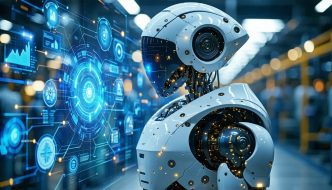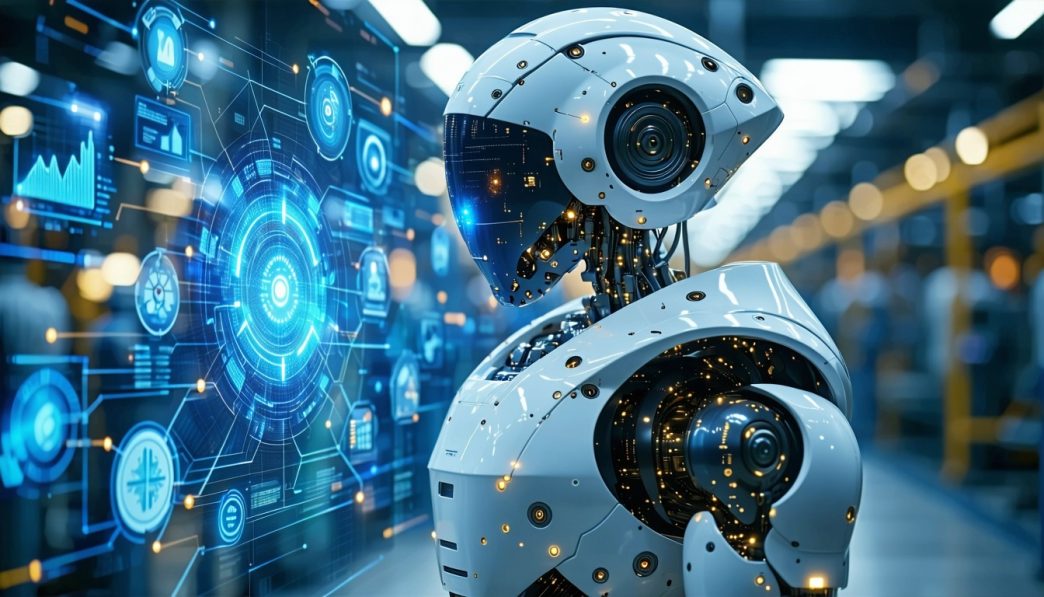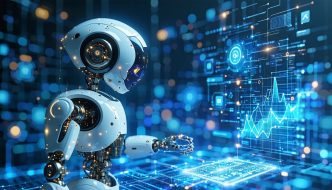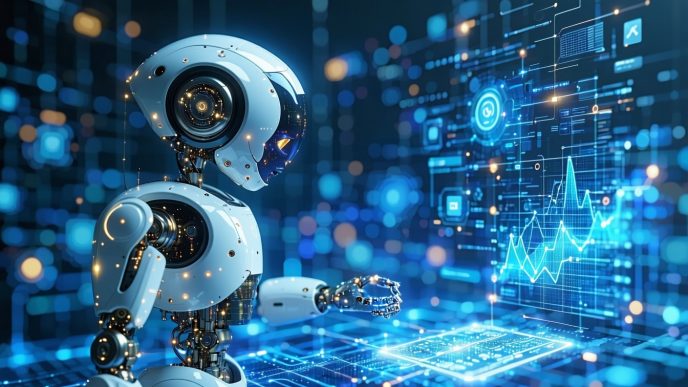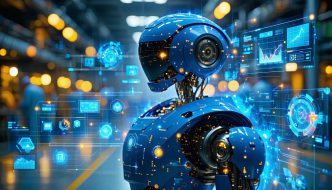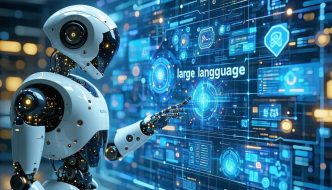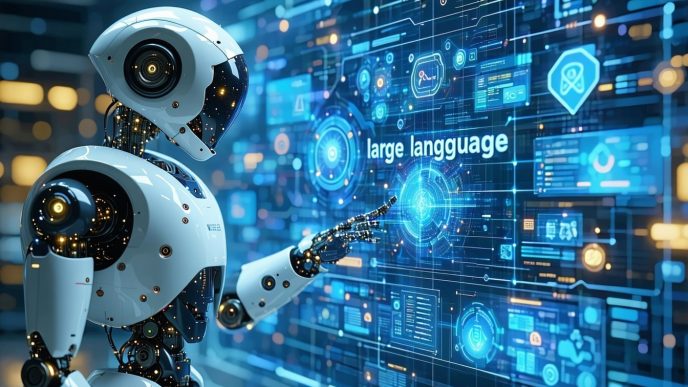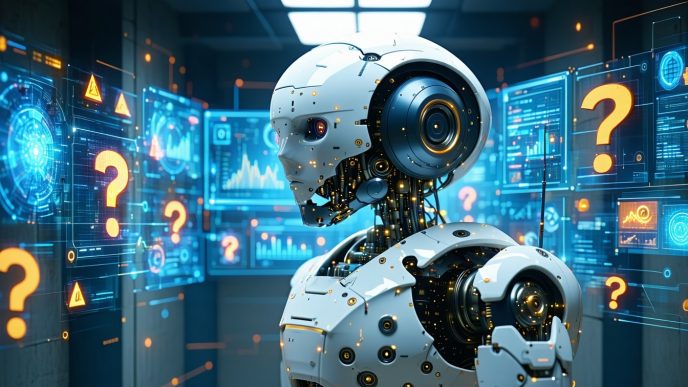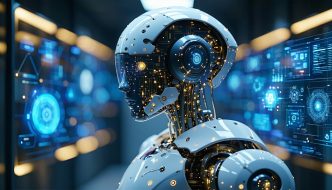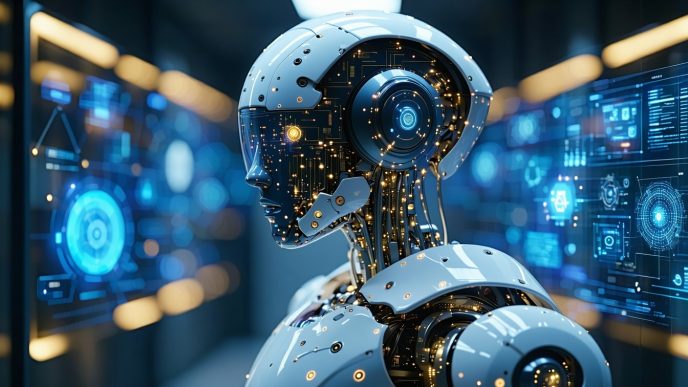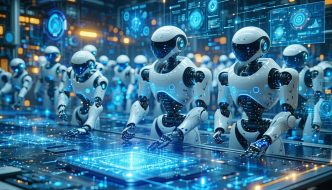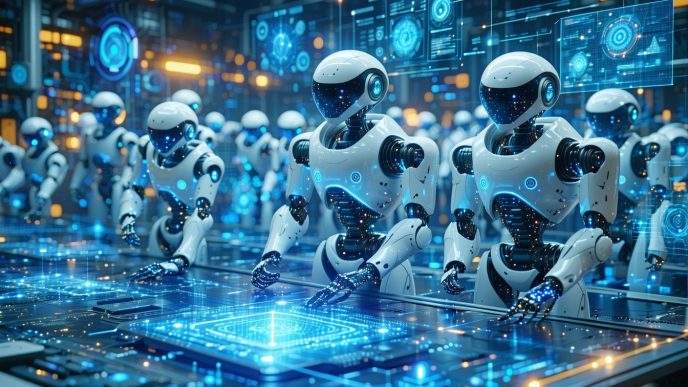Unveiling How Robots Think and Decide
Understanding how robots make decisions is crucial in today’s technological landscape. The integration of artificial intelligence (AI) allows robots to handle complex tasks and operate in dynamic real-world environments. This section explores the intricacies of AI in robotics and the importance of effective decision-making.
The Intricacies of AI in Robotics
AI enables robots to analyze data, learn from experience, and adapt to the changing environment. Through various techniques, such as large language models in robotics and real-time AI processing in robots, these machines can decipher complex patterns and make informed decisions.
The decision-making process in robots often involves several layers of AI methods, including:
| AI Techniques | Description |
|---|---|
| Machine Learning | Robots learn from experience and improve their performance over time. |
| Neural Networks | Mimics the human brain to recognize patterns and make predictions. |
| Reinforcement Learning | Robots learn by trial and error, receiving rewards for successful actions. |
These techniques contribute to the robot’s ability to process information efficiently and respond appropriately in various situations.
Importance of Decision-Making in Real-World Environments
Decision-making is pivotal in ensuring that robots function effectively in real-world scenarios. Whether navigating through obstacles, interpreting visual data, or fulfilling tasks, the quality of decisions made has significant implications.
The environment in which robots operate can be unpredictable. To manage this unpredictability, robots must:
- Perceive their surroundings accurately using sensors.
- Adapt to changing conditions seamlessly.
- Assess risks and uncertainties while making choices.
Each of these components relies on a solid foundation of AI that allows for robot pathfinding and decision making. A poorly made decision can lead to inefficient actions or mistakes, which is why it’s necessary to continually refine the decision-making algorithms.
Additionally, advancements in edge AI in robots are becoming increasingly important. By processing data closer to the source, robots can make faster decisions with less reliance on central processing units.
In summary, as robots become more integrated into our daily lives, understanding the mechanisms behind their decision-making processes is crucial. Exploring AI’s role, the impact of environmental factors, and the advancements in learning models helps to demystify how these machines operate in increasingly complex settings. For a deeper dive into how robots learn, check out our article on robot learning models explained.
Learning Processes in Robots
Understanding how robots learn is essential for grasping the concepts of AI and decision-making in robots. This section will explore the differences between machine learning and traditional programming, as well as the significance of training data and algorithms in enabling robots to make informed decisions.
Machine Learning vs. Traditional Programming
Traditional programming involves explicitly coding instructions for a robot to follow. In this approach, a programmer defines every possible input and the corresponding output. While effective for straightforward tasks, this method struggles with complexity and variation in real-world scenarios.
Machine learning, on the other hand, allows robots to learn from data and improve their performance over time without being explicitly programmed for every situation.
Here are some key differences:
| Feature | Traditional Programming | Machine Learning |
|---|---|---|
| Instruction Type | Hard-coded rules | Data-driven learning |
| Adaptability | Limited and rigid | Flexible and adaptable |
| Performance Over Time | Static | Improves with more data |
| Complexity Handling | Struggles with complex tasks | Capable of handling complexity |
Training Data and Algorithms
In machine learning, training data is crucial for teaching robots how to make decisions. Training data consists of examples that the robot uses to learn patterns and relationships. The more varied and extensive the dataset, the better the robot can generalize its learning to new situations.
There are several types of algorithms used in machine learning to facilitate the learning process:
| Algorithm Type | Description |
|---|---|
| Supervised Learning | Learns from labeled datasets to make predictions |
| Unsupervised Learning | Identifies patterns in data without labels |
| Reinforcement Learning | Learns by receiving feedback from actions taken |
Training data and algorithms work together to inform the decisions that robots make. By analyzing past experiences and outcomes, robots can develop strategies that help them navigate their environments effectively. For a deeper dive into how robots navigate and make decisions, check out our article on robot pathfinding and decision making.
The integration of these learning processes is foundational in the realm of AI and decision-making in robots. Properly designed training data and robust algorithms enable robots to adapt and thrive in real-world environments, as they continuously refine their decision-making capabilities.
Factors Influencing Robot Decision-Making
Understanding how robots make decisions involves exploring the various factors that influence their functioning. Key elements include sensors and perception, interaction with the environment, and assessment of risks and uncertainties.
Sensors and Perception
Robots rely heavily on sensors to gather data about their surroundings. These sensors can include cameras, microphones, LIDAR, and temperature sensors, among others. The information collected by these devices is processed to help the robot interpret its environment, a crucial aspect of the AI and decision making in robots.
| Sensor Type | Functionality |
|---|---|
| Cameras | Gather visual data to recognize objects and obstacles |
| LIDAR | Measure distances and create detailed maps of the environment |
| Microphones | Capture sound for voice recognition and location awareness |
| Temperature Sensors | Detect heat sources to enhance situational awareness |
These sensors provide the necessary inputs for perception algorithms, allowing robots to make informed decisions based on real-time data.
Environment Interaction and Adaptation
The ability of robots to interact with and adapt to their environments is critical for effective decision-making. Robots must not only perceive but also respond to dynamic conditions. This can include navigating around obstacles, adjusting to changes in the surrounding area, or interacting with humans and other robots.
Robots apply various strategies such as robot pathfinding and decision making to choose the best routes and actions. Adaptive algorithms allow them to learn from their interactions, improving their performance over time. This adaptability is often enhanced by machine learning models, which train robots on diverse scenarios.
Risk Assessment and Uncertainty
When making decisions, robots must evaluate potential risks and uncertainties. This involves analyzing the likelihood of different outcomes and the consequences of actions. Risk assessment helps robots avoid dangerous situations and make safer choices.
For example, autonomous vehicles use risk assessment to evaluate factors like pedestrian movement and road conditions, minimizing the chance of accidents. Robots can employ techniques from multi-agent AI in robotics to collaborate with other agents, further enhancing their decision-making capabilities.
| Risk Factor | Consideration |
|---|---|
| Environmental Hazards | Identifying obstacles or dangerous conditions |
| Unpredictable Behavior | Assessing the actions of other individuals or robots |
| System Failures | Evaluating potential failures in sensors or decision algorithms |
Robots must navigate these uncertainties to execute tasks effectively. Adopting advanced models like those discussed in robot learning models explained helps them better assess risks and make informed choices.
This combination of sensors, environmental interaction, and risk evaluation plays a vital role in how robots make decisions in real-world scenarios, showcasing the intricate balance between perception, action, and learning in robotics. For further insights, consider reading about real time AI processing in robots and AI decision transparency in robots.
Decision-Making Models in Robotics
Understanding how robots make decisions involves exploring various models that guide their actions. Three primary models are sequential decision processes, reinforcement learning, and neural networks. Each of these models plays a significant role in how robots make effective choices in real-world environments.
Sequential Decision Processes
Sequential decision processes involve a series of interconnected decisions where each choice affects subsequent options. This model is particularly useful in scenarios where robots must evaluate different paths or actions to reach a goal. For example, in robot pathfinding, a robot may need to navigate obstacles while considering future movements based on its current state and surroundings.
In a sequential decision framework, robots often utilize algorithms that evaluate potential outcomes at each step, weighing the risks and benefits of each action. This can be represented in a decision tree format, allowing robots to visualize paths and obstacles effectively.
| Step Number | Decision Point | Possible Actions | Outcome Evaluation |
|---|---|---|---|
| 1 | Navigate | Left, Right, Forward | Assessing next moves |
| 2 | Avoid Obstacle | Move Back, Jump, Wait | Risk assessment |
| 3 | Reach Target | Direct Path, Detour | Time vs. efficiency |
For more details on how robots evaluate paths, refer to our article on robot pathfinding and decision making.
Reinforcement Learning
Reinforcement learning (RL) is a type of machine learning where robots learn to make decisions through trial and error. This model simulates how humans learn from consequences. A robot receives rewards for desirable actions and penalties for undesirable ones, gradually learning which actions yield the best outcomes over time.
RL is particularly effective in dynamic environments where explicit programming of every possible scenario is impractical. Robots enhance their skills by interacting with their surroundings and adjusting their strategies based on past experiences.
| Episode | Action Taken | Reward Received | Cumulative Reward |
|---|---|---|---|
| 1 | Move left | +1 | +1 |
| 2 | Move right | -1 | 0 |
| 3 | Move toward target | +5 | +5 |
For further exploration of how robots learn effectively, see our article on robot learning models explained.
Neural Networks in Decision Making
Neural networks are a key component of many AI systems, including robots. These computational models are designed to mimic the way the human brain processes information. They consist of interconnected nodes, or “neurons,” that analyze and categorize data.
In robotics, neural networks are used to improve decision-making by enabling more complex pattern recognition and processing capabilities. For instance, a robot equipped with neural networks can analyze visual data to identify objects and make informed choices based on that recognition.
Neural networks can greatly impact a robot’s ability to adapt to new tasks or environments by enabling it to learn from vast amounts of data. The following table indicates the types of inputs a neural network might process in a robotic decision-making scenario:
| Input Type | Description | Example |
|---|---|---|
| Visual Data | Images captured by cameras | Identifying objects |
| Sensor Data | Inputs from various sensors (e.g., LIDAR) | Measuring distance |
| Environmental Feedback | Reactions based on interaction | Adjusting to obstacles |
To learn more about how neural networks function in robotics, you can visit our article on large language models in robotics.
This overview of decision-making models in robotics highlights the sophisticated methods robots use to analyze and respond to their environments, shedding light on the underlying mechanisms of AI and decision making in robots.
Challenges and Limitations
The integration of AI in robotics brings forth numerous challenges and limitations, particularly surrounding ethical considerations, bias and fairness, and the need for explainable AI.
Ethical Considerations
As robots become increasingly capable of making decisions, ethical considerations arise regarding their actions and the implications of those decisions. For instance, robots used in sensitive fields like healthcare or law enforcement must adhere to ethical standards to ensure that they do not harm individuals or communities. Ethical decision-making frameworks must be developed to guide these robots in situations where human lives are at stake.
| Ethical Issue | Description |
|---|---|
| Accountability | Who is responsible for a robot’s decision? |
| Autonomy | Should robots operate independently without human intervention? |
| Privacy | How do robots handle personal data? |
Addressing these issues requires serious thought and collaboration among developers, ethicists, and policymakers.
Bias and Fairness
Bias in AI can lead to unfair outcomes, particularly when robots are trained on datasets that reflect societal inequalities. For example, if a robot used for hiring decisions is trained on biased data, it may unfairly favor certain demographics over others. Fairness in AI and decision making in robots must be prioritized to prevent discrimination.
| Type of Bias | Example Impact |
|---|---|
| Gender Bias | Discrimination in hiring |
| Racial Bias | Unequal treatment in law enforcement |
| Socioeconomic Bias | Limited access to services for disadvantaged groups |
Developers must ensure diverse representation in training datasets to mitigate these biases. More information can be found in our article on robot learning models explained.
Explainable AI
Explainable AI (XAI) refers to methods that make AI-driven decisions transparent and understandable to users. For many users, especially those not familiar with complex algorithms, knowing why a robot made a specific decision is vital. Lack of transparency can erode trust in robotic systems and lead to hesitations about their use in everyday life.
| XAI Challenge | Description |
|---|---|
| Complexity | Algorithms can be intricate and difficult to explain. |
| Trust | Users may not trust robots that cannot articulate their decision-making process. |
To enhance transparency, researchers are developing frameworks that provide clarity on how robots arrive at decisions, such as logging decision paths. This topic is further discussed in our article on ai decision transparency in robots. Addressing these challenges and limitations is essential to the future advancement of AI and decision making in robots, ensuring they are ethical, fair, and trusted by society.
Real-Life Applications
The application of AI in robotics extends into various sectors, where decision-making capabilities enhance functionality and efficiency. This section explores three significant areas where robots utilize AI and decision-making processes: autonomous vehicles, healthcare robotics, and smart home systems.
Autonomous Vehicles
Autonomous vehicles represent one of the most advanced applications of AI in decision-making. These vehicles rely on a combination of sensors, cameras, and machine learning to navigate complex environments. They process real-time data to make split-second decisions, such as avoiding obstacles and responding to road signs.
The table below summarizes key features of autonomous vehicles in relation to AI decision-making:
| Feature | Description |
|---|---|
| Sensor Types | Cameras, LIDAR, Radar |
| Decision-Making Process | Real-time analysis of surroundings using AI |
| Safety Protocol | Collision avoidance systems integrated with AI |
| Learning Capability | Adapts to new driving conditions through machine learning |
For more information about how robots navigate, refer to our article on robot pathfinding and decision making.
Healthcare Robotics
In the healthcare sector, robots assist in surgery, patient care, and medication management. They use AI to analyze patient data, assist surgeons during operations, and even carry out routine tasks like delivering supplies within a hospital.
The decision-making abilities of healthcare robots improve patient outcomes and efficiency. Key aspects include:
| Application | AI Decision-Making Role |
|---|---|
| Surgical Assistance | Provides real-time feedback to surgeons |
| Patient Monitoring | Analyzes vital signs to detect abnormalities |
| Medication Dispensing | Calculates dosages and schedules based on patient data |
For insights into the use of AI in specific areas of robotics, check our article on real time ai processing in robots.
Smart Home Systems
Smart home systems integrate various devices to enhance convenience and security. These systems, powered by AI, allow users to automate their homes while enabling robots to make decisions based on user preferences and environmental data.
Key features include:
| Feature | How AI Improves Functionality |
|---|---|
| Voice Assistants | Understands user commands and personalizes responses |
| Security Systems | Analyzes data from cameras and sensors for threats |
| Energy Management | Optimizes power use based on patterns and preferences |
To explore how these systems can be enhanced with multi-agent AI technologies, see our article on multi agent ai in robotics.
AI and decision making in robots are transforming the way we see technology in daily life. The real-world applications mentioned illustrate the impact of these advances, demonstrating how robots enhance efficiency and safety across different industries.
Future of AI in Robotics
The future of AI in robotics promises significant advancements and innovations, particularly in the area of decision-making. These advancements reflect the growing complexity of environments in which robots operate and the necessity for more intelligent systems.
Advancements in Decision-Making Algorithms
As technology evolves, so do the algorithms that enable robots to make decisions. Future developments in decision-making will likely focus on enhancing efficiency, accuracy, and adaptability. Key areas of advancement include:
-
Reinforcement Learning Enhancements: Future algorithms will improve upon existing reinforcement learning techniques, allowing robots to learn more efficiently from their environments and interactions.
-
Neural Network Improvements: Advances in neural network architectures will enable robots to process data more effectively, making real-time decisions based on complex inputs. This is particularly relevant in dynamic settings such as autonomous navigation.
-
Edge AI Innovations: Incorporating edge AI will allow robots to analyze data locally rather than relying solely on cloud computing. This leads to faster decision-making and reduced latency, which is crucial for time-sensitive tasks like robot pathfinding and decision making.
| Algorithm Type | Key Advantages |
|---|---|
| Reinforcement Learning | More adaptive and efficient learning from feedback |
| Neural Networks | Enhanced processing of complex data |
| Edge AI | Reduced response time for real-time processing |
These advancements will contribute to improving reliability and effectiveness in robotic applications, making robots more adept at handling real-world challenges. For deeper insight, see our article on robot learning models explained.
Integration of AI Across Industries
AI is increasingly being integrated throughout various industries, transforming how robots operate. Industries such as healthcare, manufacturing, and smart home technology are witnessing significant changes thanks to AI-enabled robotics.
-
Healthcare Robotics: AI allows for robots to assist in patient monitoring, data collection, and even surgeries. These systems utilize advanced decision-making algorithms to improve patient outcomes.
-
Manufacturing Automation: In manufacturing, robots use AI to optimize production processes, reduce waste, and ensure quality control. They make decisions based on real-time data analysis, leading to increased efficiency.
-
Smart Home Systems: In the realm of smart homes, robots equipped with AI can learn user preferences and make decisions to optimize comfort and energy use. These systems rely on real-time AI processing to adapt to changing household dynamics.
| Industry | Application of AI in Robotics |
|---|---|
| Healthcare | Patient assistance and surgical support |
| Manufacturing | Process optimization and quality control |
| Smart Homes | Environment adaptation and energy management |
As robots become smarter, their integration across various sectors will enhance productivity and functionality. For more details on AI’s integration, check out our article on real time ai processing in robots.

